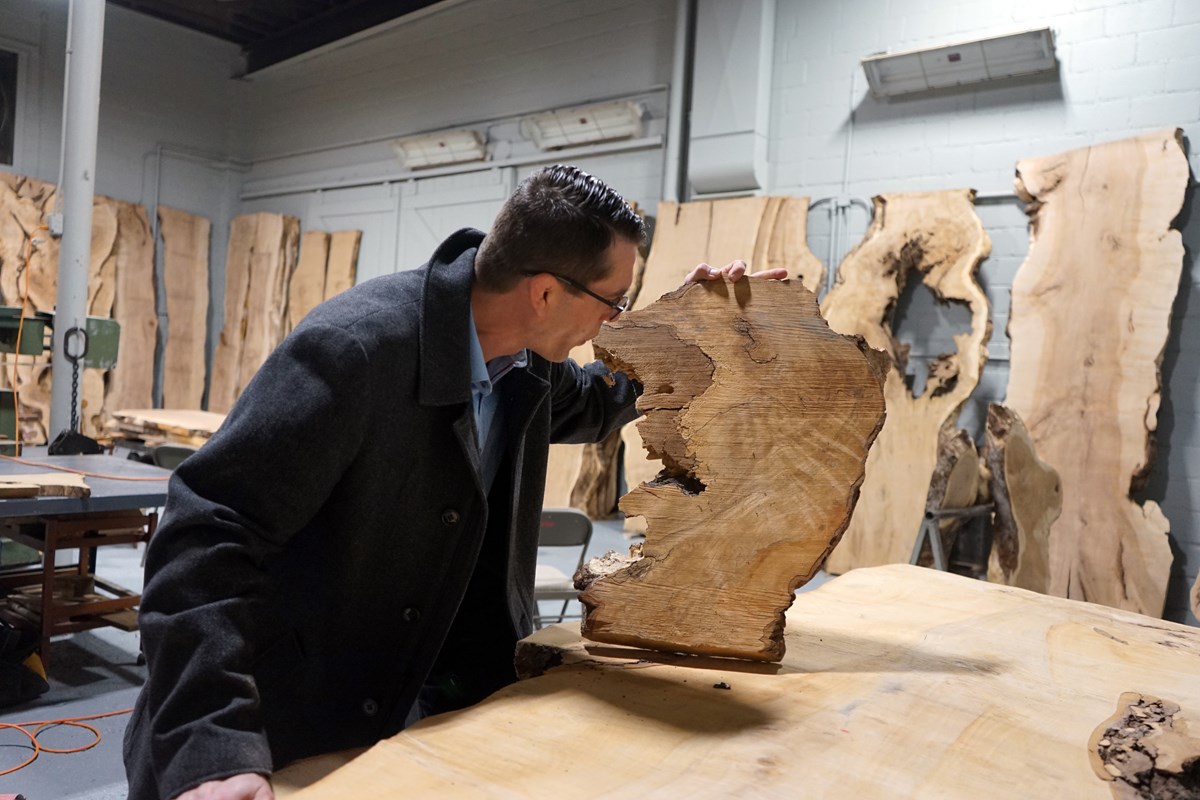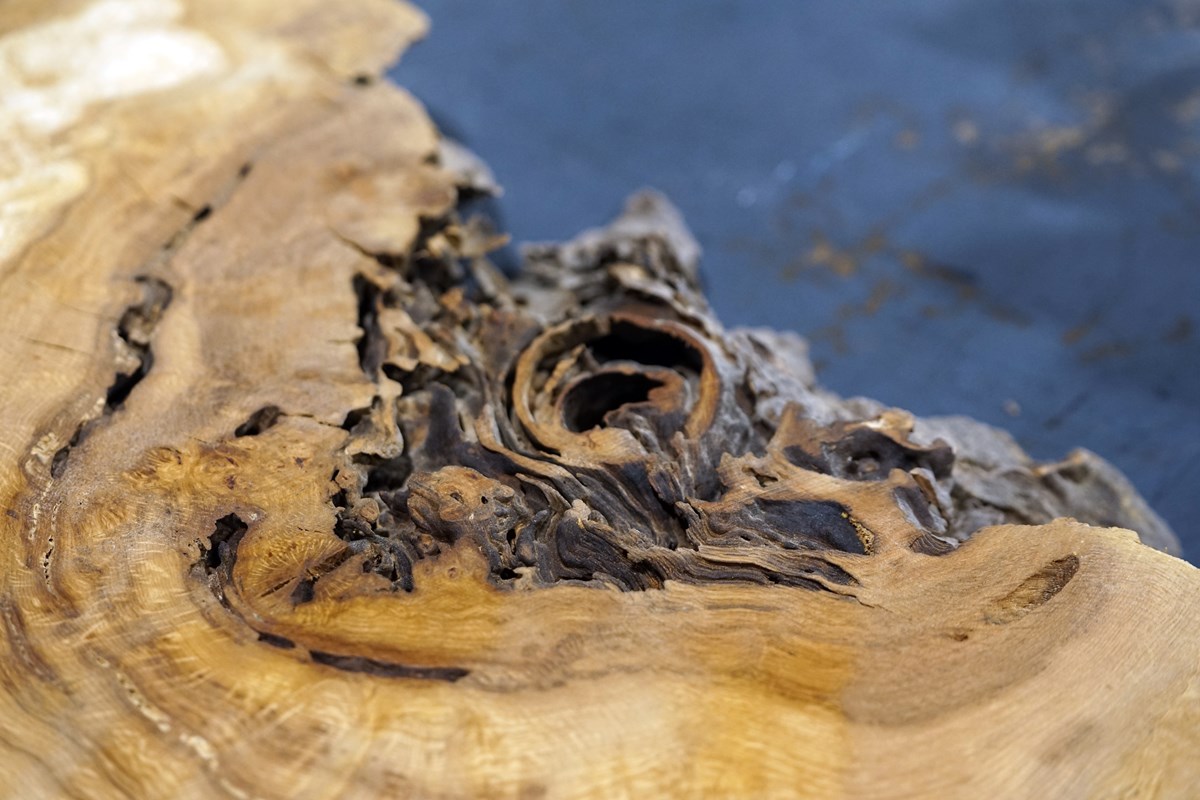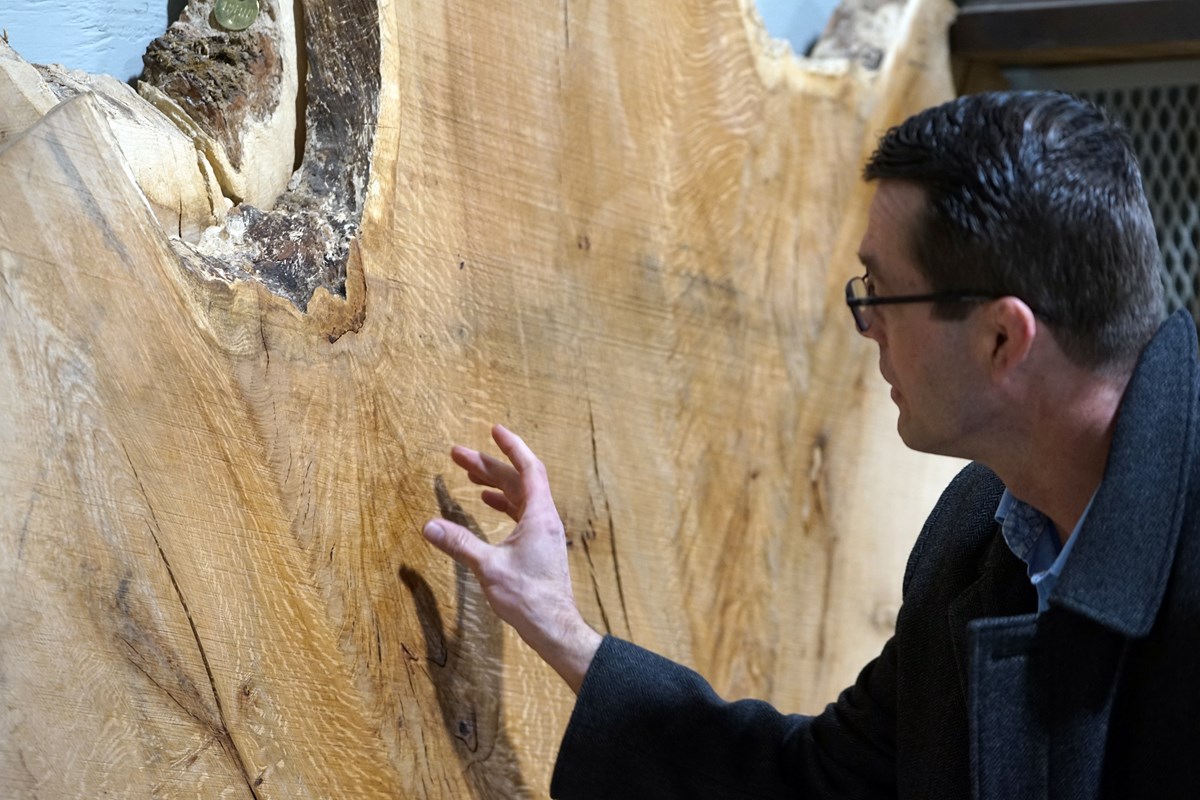 Image by Ed Brennen
Image by Ed Brennen
Sean Harrington ’97 traces his finger along the grain of one of his most prized pieces of wood — a 201-year-old sugar maple that a farmer needed removed from his property in Alstead, New Hampshire — and pauses at a blip in the tree’s rings.
“This tap hole here is about 125 years old,” Harrington says. “There was a Civil War militia training right next door to Alstead, so Union soldiers may have been drinking maple syrup from this tree.”
Harrington’s historical hypothesis is just one of the many reasons the business alum is so excited about his new venture, Wolf Tree Wood, a provider of wood slabs for custom furniture based in his hometown of Dracut, Massachusetts.
“It’s been a long journey to get to this point. I didn’t see it coming,” says Harrington, a two-time All-American wrestler at UMass Lowell who spent four years at the U.S. Olympic Training Center in Colorado Springs, Colorado, coached the sport for nearly a decade at Boston University and Harvard, and launched his own gym in Lowell.
 Image by Ed Brennen
Image by Ed Brennen
In 2019, Harrington gave up coaching to spend more time with his family (he and wife, Jacqueline, have two teenage daughters, Madeline and Sophia). Harrington thought he would go into real estate development — until a neighbor asked if he could help remove a dying 225-year-old white oak tree from his yard.
It was the first of six trees that Harrington has acquired so far for his business, which officially launched this spring. After drying the trunks in a kiln, he has them cut into sections and then sands each piece by hand. They lean, like artwork, against the walls of his shop, a former diesel engine garage.
Harrington has developed his own grading system for the wood. He sells the unfinished pieces, which are cataloged on his website, to woodworkers for around $10,000 each. Harrington plans to finish other pieces himself and turn them into dining room tables, which he says could fetch around $25,000.
Ever since he built his first tree house at the age of 12, Harrington has had an appreciation for trees. He will only harvest trees that are dying or need to be felled for safety reasons.
 Image by Ed Brennen
Image by Ed Brennen
“Cutting down a tree for profit is 100% against my philosophy,” he says.
But Wolf Tree Wood, named for “lone wolf” trees that are older and taller than others in the area, is more than a high-end furniture business. Harrington hopes to teach UMass Lowell students how old growth trees (150 years-plus) communicate with each other via underground pathways of mycelium and by releasing chemicals in the air when under attack by insects and fungi.
“Scientists know a lot of this stuff, but there’s an intelligence in the trees that we don’t quite understand,” says Harrington, who is working with Joy Winbourne, an assistant professor of environmental, earth and atmospheric sciences at UML, to have students analyze the DNA of his trees to learn about past atmospheric and environmental conditions.
After being detached from his alma mater for many years (UML dropped wrestling in 2000), Harrington was happy when Athletic Director Peter Casey reached out to him in 2018 about reengaging with fellow wrestling alumni. Harrington now serves on the Athletic Advisory Board.
 Image by Ed Brennen
Image by Ed Brennen
“I can’t tell you how enjoyable and rewarding it has been to work with athletic programs, share advice and take in information about different aspects of the university,” says Harrington.
He sees a connection between UML’s rise to NCAA Division I competition and its Wall Street Journal ranking as the top public school in Massachusetts.
“There are a lot of athletes at the school who put the UMass Lowell emblem on their chest and are a face of the university,” he says. “I know what those athletes and coaches are going through, and to see that level of commitment gives me a ton of pride.”
Harrington didn’t shine on the wrestling mat until his senior year at Dracut High School, when he went undefeated. It was too late for most college coaches to recruit him, but he did catch the eye of Tim Heitzman, who was taking over UML’s Div. II program that year.
“I owe that man everything. He put everything into me, so I wanted to give everything I had,” says Harrington, who went 125-25-2 during his UML career. “My experience and my path in life is because of UMass Lowell. I’m eternally grateful.”
